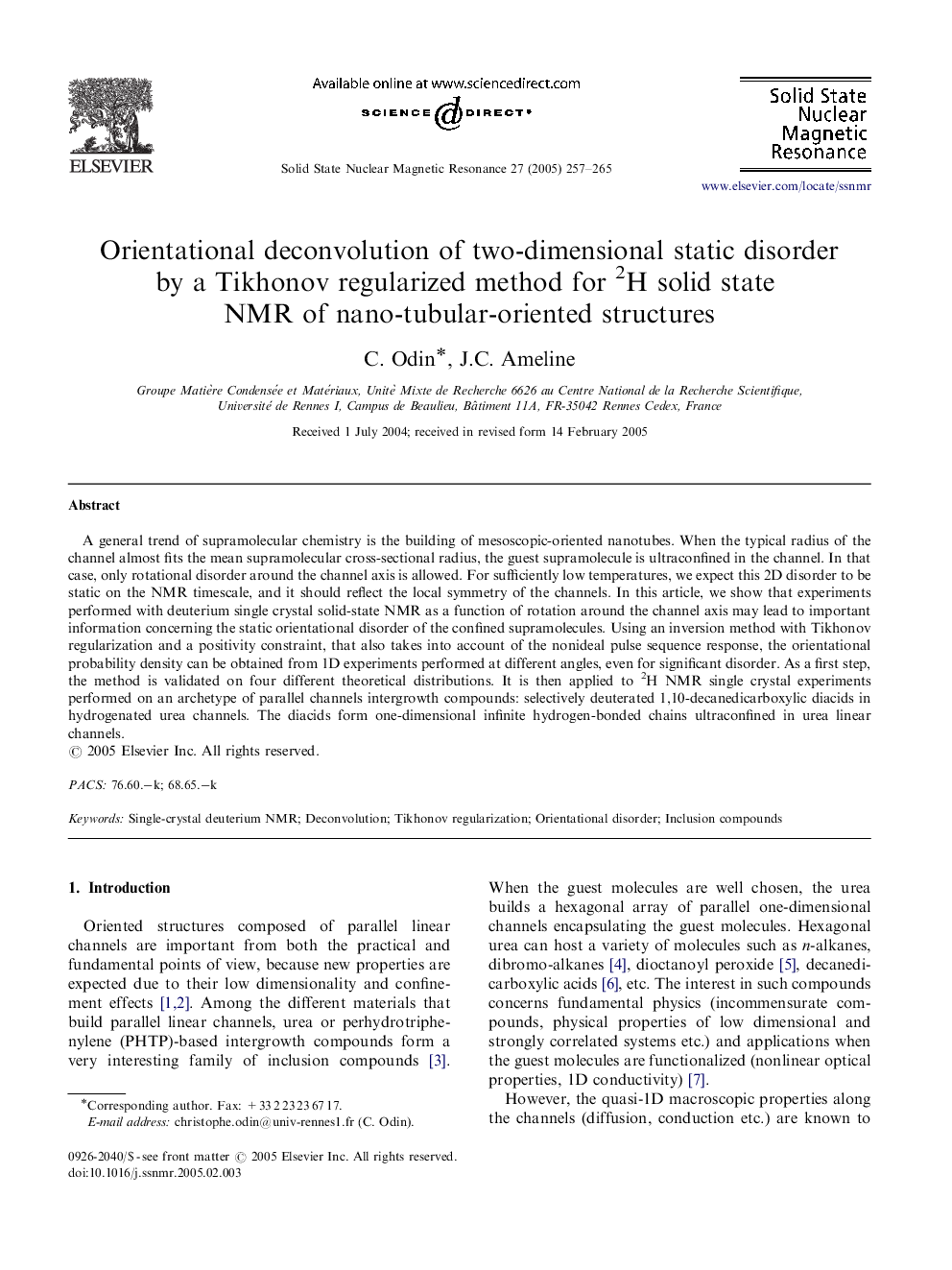| Article ID | Journal | Published Year | Pages | File Type |
|---|---|---|---|---|
| 9594180 | Solid State Nuclear Magnetic Resonance | 2005 | 9 Pages |
Abstract
A general trend of supramolecular chemistry is the building of mesoscopic-oriented nanotubes. When the typical radius of the channel almost fits the mean supramolecular cross-sectional radius, the guest supramolecule is ultraconfined in the channel. In that case, only rotational disorder around the channel axis is allowed. For sufficiently low temperatures, we expect this 2D disorder to be static on the NMR timescale, and it should reflect the local symmetry of the channels. In this article, we show that experiments performed with deuterium single crystal solid-state NMR as a function of rotation around the channel axis may lead to important information concerning the static orientational disorder of the confined supramolecules. Using an inversion method with Tikhonov regularization and a positivity constraint, that also takes into account of the nonideal pulse sequence response, the orientational probability density can be obtained from 1D experiments performed at different angles, even for significant disorder. As a first step, the method is validated on four different theoretical distributions. It is then applied to 2H NMR single crystal experiments performed on an archetype of parallel channels intergrowth compounds: selectively deuterated 1,10-decanedicarboxylic diacids in hydrogenated urea channels. The diacids form one-dimensional infinite hydrogen-bonded chains ultraconfined in urea linear channels.
Keywords
Related Topics
Physical Sciences and Engineering
Chemistry
Physical and Theoretical Chemistry
Authors
C. Odin, J.C. Ameline,
